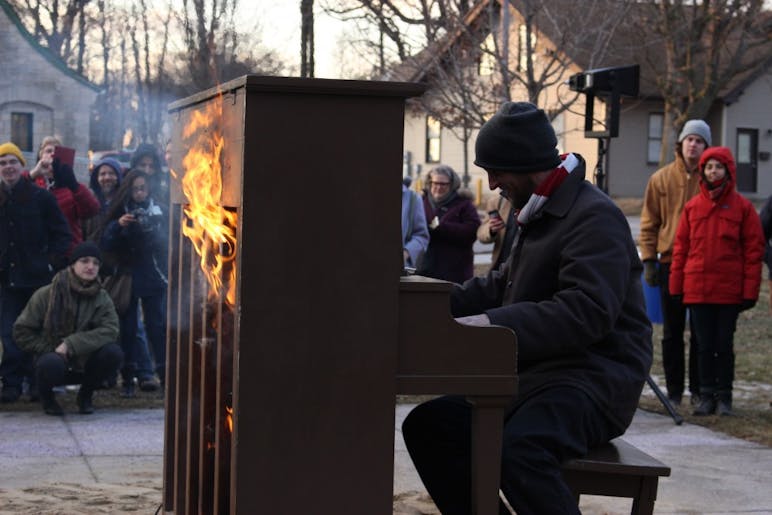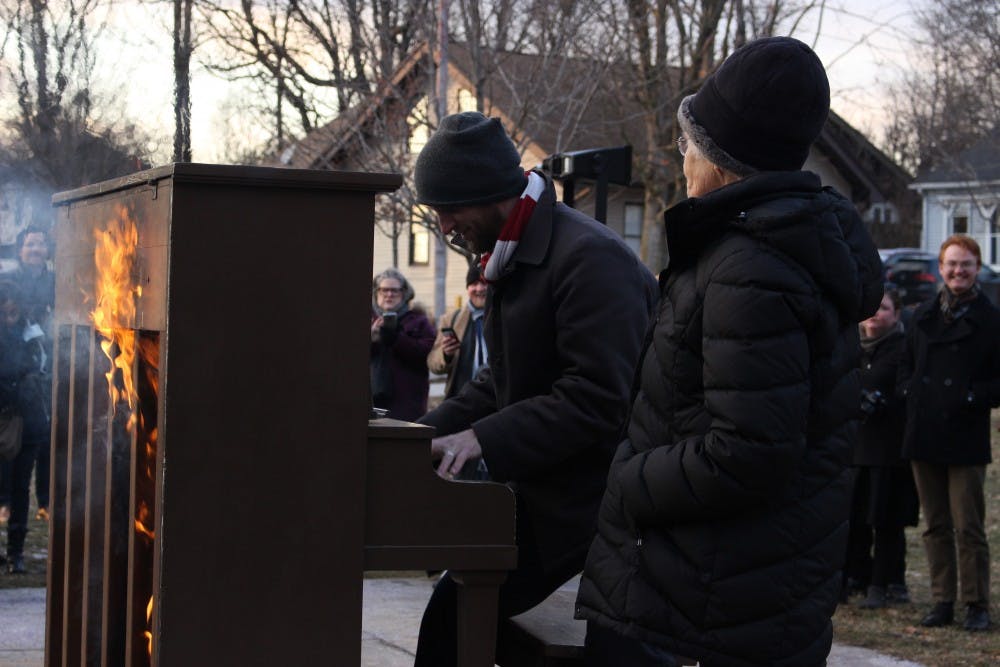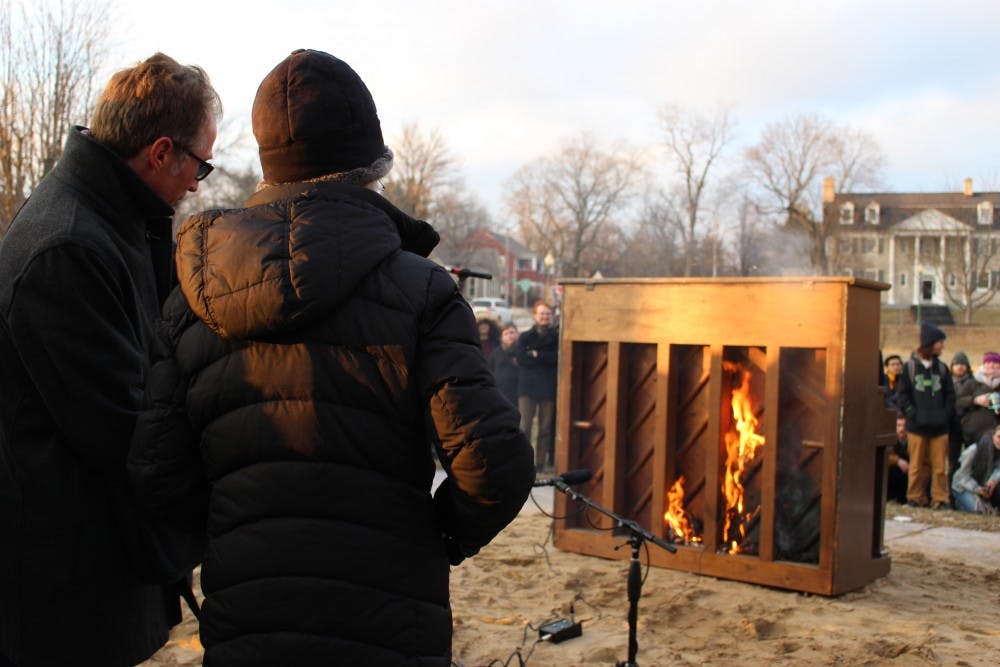Composer and artist Annea Lockwood and Jon Vickers, founding director of the Indiana University Cinema, placed Indiana Daily Student newspapers in the back of a 1916 Henderson upright piano. Then, they lit the papers on fire.
The piano burning Wednesday in Dunn Meadow was part of IU’s Wounded Galaxies festival. Wounded Galaxies seeks to memorialize the radical shifts in technology, art and politics in 1968 — 50 years ago.
Small drifts of smoke flitted away from the paper and charring wood of the piano’s back. The back corner caught flame and rose up the support beams. Pianist Ross Martinie Eiler played some jazz riffs as the flames swept up the lid.

As pianist Chris Rall sat down to play, wisps of smoke seeped through the lid and oozed through the slots between the keys.
A child turned to his father.
“Dad, it’s like the Great Chicago Fire, except it’s the great piano fire,” the child said.
Rall played the out-of-tune piano with discordant, rippling sound textures. He occasionally descended into muddy chord digressions, then sharp, punchy crescendos that gurgled their tone and drifted into ambience as crackling wood sounded on the surrounding microphones.
“There was paper and stuff floating above the keys as I played it,” Rall said. “The smoke really stunk.”

Lockwood asked Rall to move away. Before long, flames and gray smoke rolled up from under the keys and upper panel.
The entire keyboard and lid billowed into opaque clouds. The sound of the worn, tinny strings snapping burst in quick succession, like tin cans slamming against each other.
“I tried to ensure the piano burned slowly so you get a chance to see all the tendrils of smoke and flame creeping between the keys,” Lockwood said.
The entire piano was consumed in flame and smoke. The main panels of the instrument fell away and exposed the skeleton of burning woodwork.

In a slow, stretching moment, the piano fell on its back to the ground. Fire and cinders lashed out into the air. The crowd roared.

One of the microphones was trapped under the piano and couldn’t be recovered.
Lockwood performed her first piano burning in 1968 in London. She was assembling audio recordings of fire for a projected dance piece she was working on.
“I kept recording fire in my fireplace, fire in a courtyard, a bonfire,” Lockwood said. “Nothing was quite compelling enough.”
She said she heard of a piano graveyard and thought about what burning, snapping piano strings might sound like.
Lockwood said her interest in piano transplants grew from the surreal adjacency of pianos and natural settings.
She set up an upright piano on the bank of the Thames River in London, and set it aflame with a small microphone inside the base. A crowd gathered.
“The mic would pick them all up,” Lockwood said. “It made the recording totally useless, which was funny. From then on, it’s been a sound and light show, so to speak.”
The following year, she set up three pianos in a garden in Ingatestone, Essex, England, and left them there.
“People would come by and pop in the garden gate and play something on the grand,” Lockwood said. “That was very nice.”
Lockwood went on to perform many other forms of piano destruction, which she titled “Piano Transplants” in commemoration of Dr. Chris Barnard’s first human heart transplant from 1968.
“Pianos surrounded by saplings is a curious image,” Lockwood said. “A piano sitting on the beach with waves curling around it is a curious image. There was a lot of playfulness and readiness to really experiment in a playful way, which was very liberating.”
She sunk one piano slowly into a clay pond in Texas in 1972 and left another on an Australian beach to be swept away in a storm in 2005.
“The waves raced in and dismantled it, and left the main body of the instrument lying on the beach, half full of sand,” Lockwood said. “You could still make sounds from the strings.”
Lockwood said people often associate the piano destruction with destruction of old traditions, a characteristic aesthetic of the '60s and '70s. But this was never her intention.
“This was never intended to be a destructive act of that nature,” Lockwood said. “I’m more interested in exactly how every piano succumbs to the flames.”
Lockwood will give a free talk, “Exploring Wild Energy,” 3 p.m. Thursday at the Monroe County Public Library. She will discuss piano burning and other piano transplants.
Piano burnings are a mesmerizing, slow, beautiful thing, Lockwood said.
“The closer you get, the stronger the sound, the more enveloping the experience,” Lockwood said.




